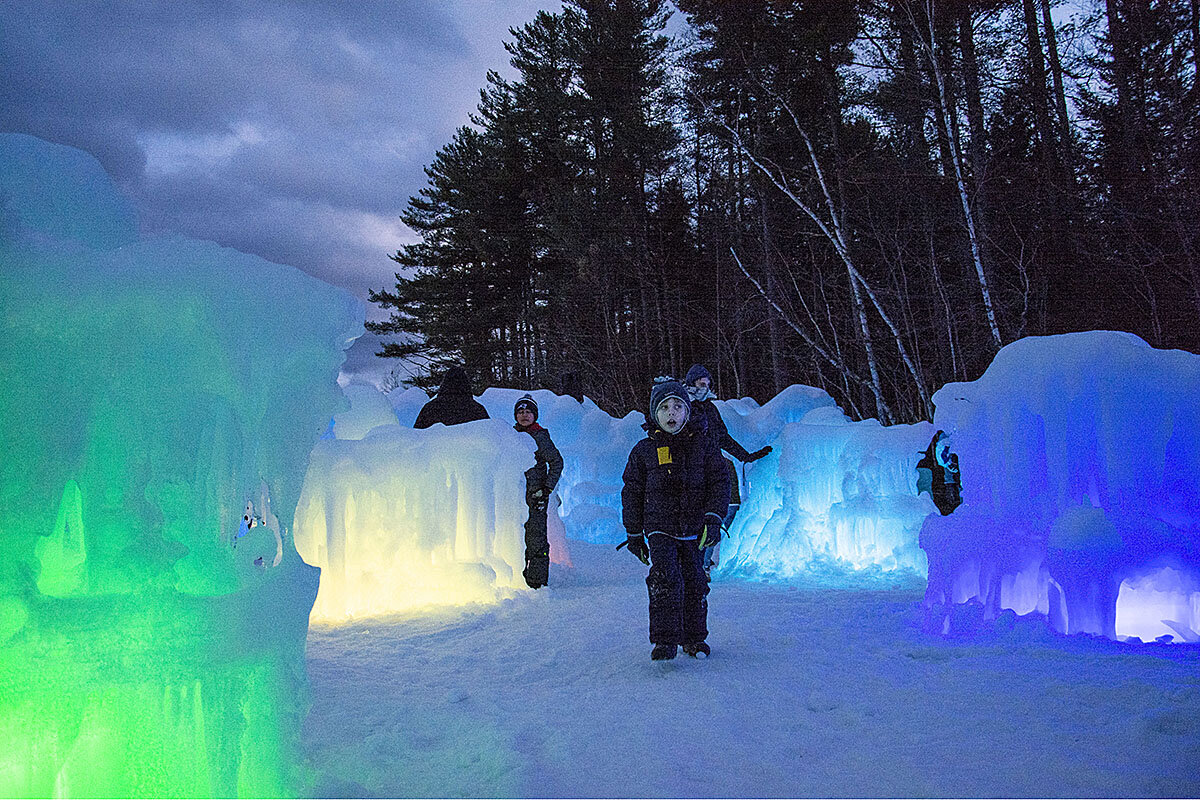Winter, where are you? Please come back.
Loading...
| Lincoln, N.H.
I cannot remember when or why or how I came to love winter. I’m not from a cold-steeped town like Minneapolis or Burlington, Vermont. I’m from Cincinnati, a city that flirts with the freezing point from December to March but rarely delivers more than a dusting of snow.
That’s one reason I was excited to move to Boston in January, in the deepest part of the deep freeze. I wanted to trudge through feet of snow and climb 40-foot-tall snowbanks in parking lots. I had read all the news reports when the city broke its all-time records with 108.6 inches of snow. I was so ready for it. I wanted it. Then, nothing.
Now it’s late March. We’ve had one decent snowstorm, but I still want more. People are cheering the arrival of spring with robin sightings and crocuses pushing through the earth, and I’m wondering if winter might still show up.
Why We Wrote This
New to New England, tales of snowpocalypse danced in his head. What’s a reporter to do when he hasn’t had his fill of snow and ice? Head north.
This is why, as tourists flocked to Boston for St. Patrick’s Day, I drove north – and pulled into a parking lot in Lincoln, New Hampshire, to check out Ice Castles, a self-described “winter wonderland.” It was the park’s last day before it closed for the season, and I wanted to sate my winter-loving soul.
I arrived just after sunset. Tall hunks of ice and icicles towered over me as I entered the park and walked along a narrow passageway. Eventually, it gave way to a clearing and I was greeted with a winter wonderland: frozen thrones, icy tunnels, and glacial walls lit by a rainbow of colored spotlights. Happy kids zoomed down ice slides, quickly followed by their equally giddy parents. As darkness fell, the multicolored light show grew more brilliant, stopping people in their tracks.
Across the icy labyrinth arose conversations in Hindi and Spanish. I chatted with a family of five from Martha’s Vineyard, who drove five hours to play in some ice and snow. Winter had skipped their neighborhood, too.
For Andrew Rebeiro, a longtime park employee, the park’s reach is the coolest part.
“A lot of times these families wouldn’t have a reason to come [to New Hampshire] in the winter,” says Mr. Rebeiro, who has been working for the park since it came to New Hampshire six years ago. He says thousands of people visit their park every year. “Here you have a lot of families that have never seen winter like this before, never seen the stars like this.”
In the frosty air, I could feel myself relax and breathe more deeply. Winter forces me to slow down. And when I slow down, I notice more. Late-night snowfalls turn a cacophonous world into a lush, quiet repose. The cold reminds me that I have a body, forces me to find warmth and comfort in and with others. The only creature comforts are a single hot chocolate stand and two fire pits.
I’m sorry to tease with these sights now that winter is gone. But next year, if you head to one of the six Ice Castles in North America, it’s worth the trip to hem yourself behind thick walls of ice. You’ll find joy. I saw it in the happy, rambunctious children sliding down ice and their parents snapping photos of them. And I even saw it in Orion, poking out from behind an evening cloud.







